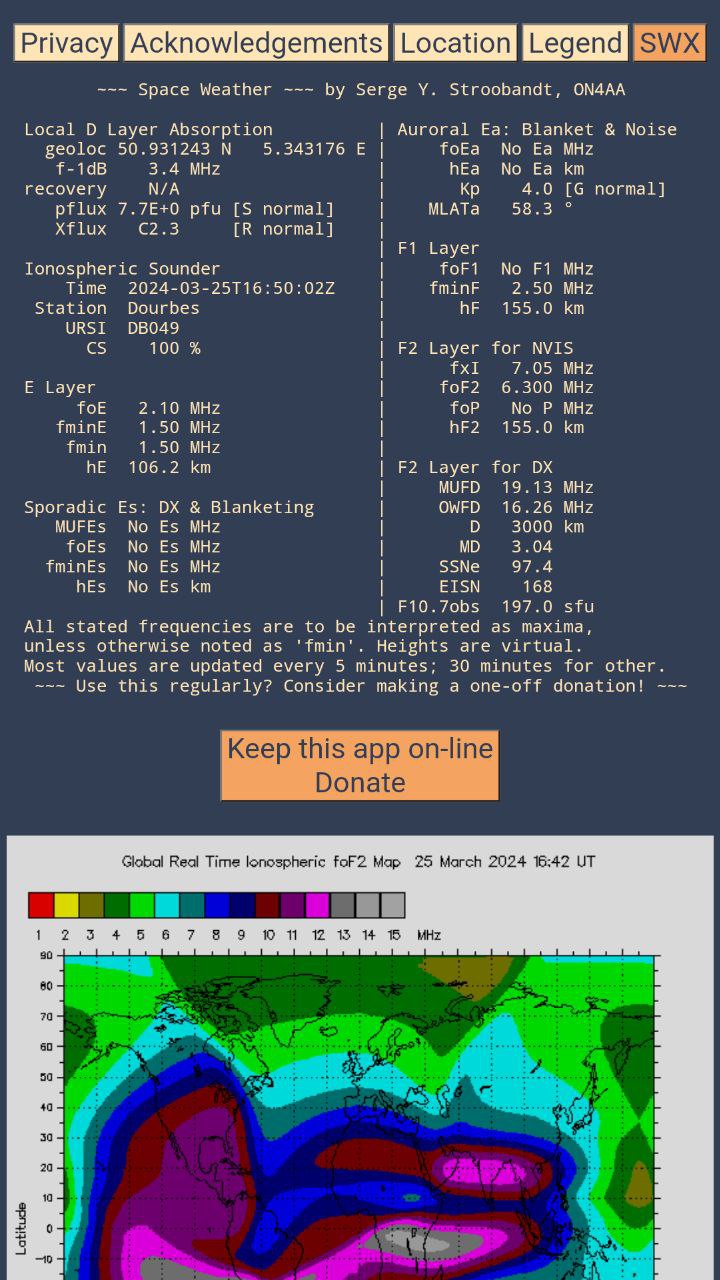@DM1CM Thank you for your honest personal opinion, Rob.
Admittedly, at first glance, it might not be entirely obvious what sets this HF propagation dashboard apart from the many other available on the Internet.
What is unique about it, is that it reports ionosounder measured critical frequencies of the ionosphere above you, which is important for NVIS. It also calculates the MUF of sporadic Es in real-time, and much more. The code is open-source and free to inspect. Behind the scenes there happens more than what you may imagine.
However, I do concede that getting to grips with interpreting the reported values may represent a learning curve. This can be overcome by personal study and using this real-time app whilst listening.
The images are precisely there to teach the effects of, for example, a high X-ray or proton flux on a worldwide scale. I don’t need them and that is why there is also a “Lite” version without those.
All data comes directly from the original sources, which renders the data near-instantaneous. For example: Last night, the app was one hour quicker than NOAA to report Kp = 8.3, as the app links directly with the GeoForschungsZentrum (GFZ) in Germany, where the worldwide magnetometer data is processed. Most dashboards you see on the Internet are outdated by at least one hour and many even by 24 hours.
A brief history about this dashboard: An early precursor of this app ran as a web page since May 2016 and became wildly popular over the years. It broke due to API and hosting service changes two years ago. Around the same time I fell seriously ill. In the mean time, I received numerous e-mails nagging and begging me to restore this service. Now, that I am finally recuperating from my invalidating chronic condition, I set about to do just that and better. So, this was really by popular demand. The web site statistics are there to show. Oh well, pearls for the swines, I guess…
As for the donation request; This is a free (as in beer) app, and it always will be. No one should feel coerced to donate. On the other hand, hosting hamwaves.com and e-mail costs over €15 a month, €21 starting next year. (Any cheaper suggestions are welcomed.) Donating might not be a thing in Europe, but it is in other parts of the world. Over the years, I have received numerous €10 donations, not only for this app, but also for the unique and peculiar RF calculators. Thank you! It does not cover my costs entirely, but contributes significantly, especially given my situation. I also donate to projects that are of significance to me.
Destroying something only takes a minute, whilst building something useful takes more time…
Hopefully, there will be more positive and constructive reactions to be read here…


